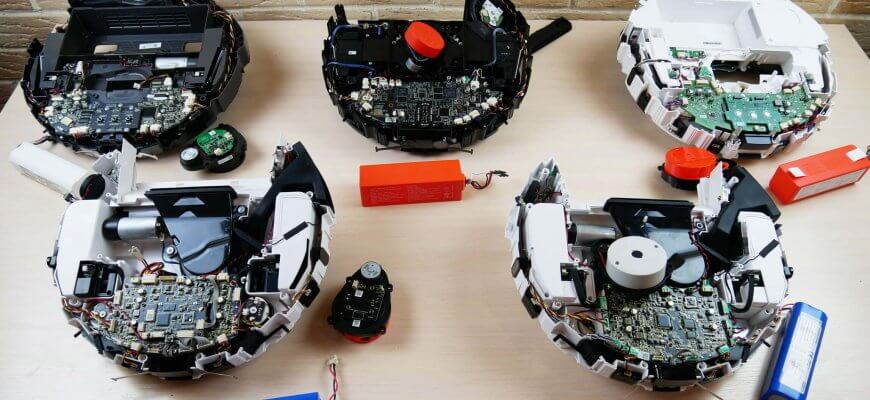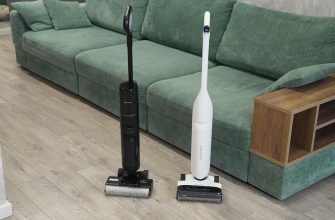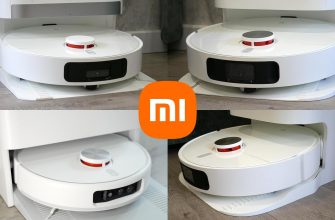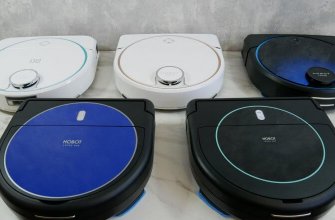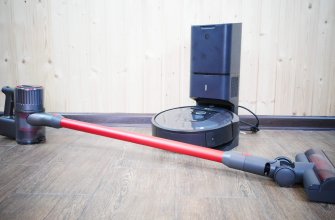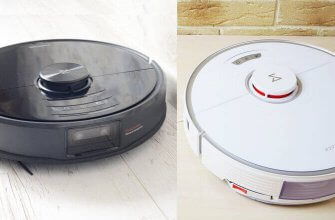Hi to all readers of Robotobzor! In this review, I decided to demonstrate and compare the build quality of the popular Xiaomi robot vacuum cleaners from different sub-brands. Main models of different price segments took part in the comparison. These are Roborock S7, Viomi S9, Dreame Bot Z10 Pro, Xiaomi Mijia Vacuum Cleaner Pro and Roidmi EVE Plus. We will analyze these robot vacuum cleaners and show how they are built from the inside, and how the assembly quality of robots differs in general from different Xiaomi factories. In addition, I took advice from an experienced robot vacuum cleaner repairman who gives advice on well-known forums under the nickname Medtech. Also, branded service center “Service Xiaomi” took an active part in the preparation of these materials. So here I will present some important observations of experts in this material. So, let’s go!
The cost of compared robot vacuum cleaners
Before comparing the build quality, it is worth talking about the cost of each of the robot vacuum cleaners, because we will consider this when summing up the results (where the increased cost is justified, and where not at all).
So the most expensive ones are Roborock S7 and Viomi S9 for about $600. But Viomi also comes with a self-cleaning base.
Dreame Bot Z10 Pro costs about $450-500, also with a garbage unload station.
The cost of Mijia Pro and Roidmi Eve Plus is about $350, they are the most budget in this comparison. This is important to consider. Moreover, Roidmi is also equipped with self-cleaning base.
Comparison of lidars and batteries
First, I will show the lidars of the compared robot vacuum cleaners. They differ quite a bit in design. Only the Roborock lidar stands out. Firstly, the lidar motor is visually larger than in other robots, and, secondly, the lidar itself is connected to the board through the output connector, without additional wires, like other robots. Well, Viomi and Roidmi lidars are visually completely identical. It’s interesting.
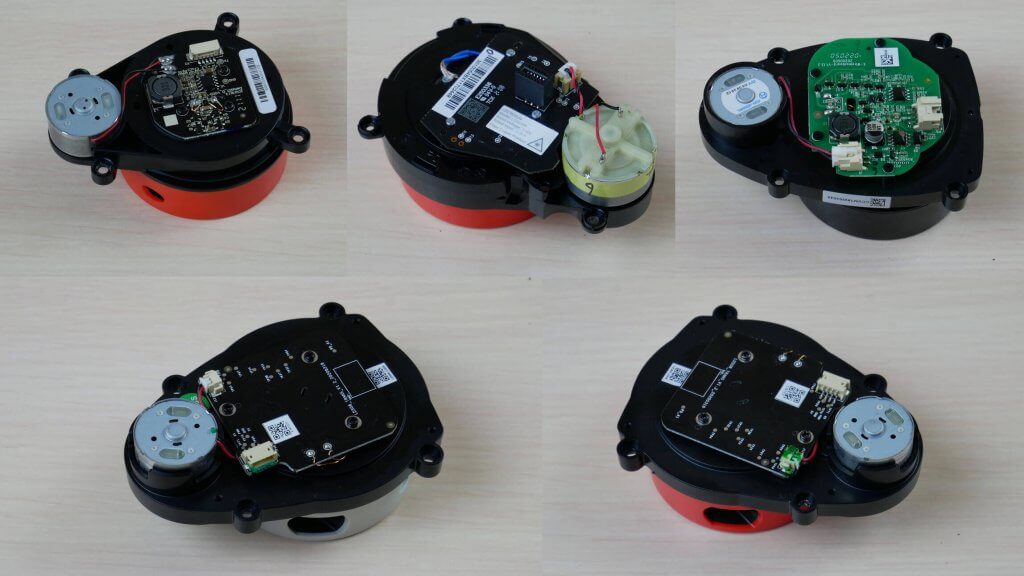
Now let’s compare batteries. They are all the same in terms of characteristics: voltage 14.4 V, capacity 5200 mAh. Mijia and Roborock have a plastic battery case, it looks somehow better in terms of quality. And again, Viomi and Roidmi have identical batteries.
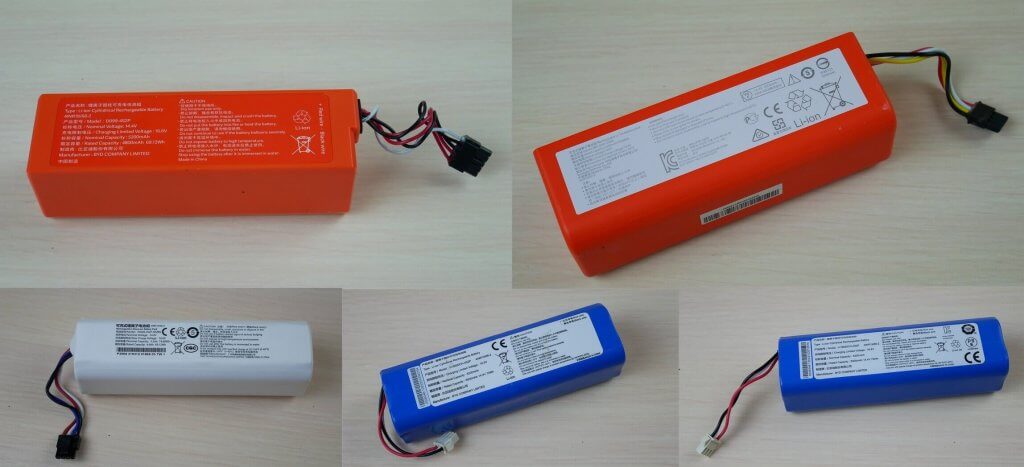
Important comments on this:
Medtech: Roborock’s most reliable protection system today: several levels, certified for sale in Europe. Dreame only has overcurrent protection, uncontrolled overcurrent protection, overheating protection and standard overcharge and overdischarge protection. Also, there are tracks for several more levels of protection that presented on the board, but they are not used. All elements are protected against overheating by a non-return circuit breaker.
Service Xiaomi: Batteries for all robot vacuum cleaners are the same. The case changes, which does not affect performance in any way. Previously, “banks” from LG were used, now “banks” from Samsung are most often used. However, this doesn`t affect much because the battery controllers are the same. It can only be noted that Viomi has a low-level harness. There are also robots with unmarked banks, but this applies to more budget models and was a long time ago.
Comparison of electric motors
Next, we compare the electric motors responsible for the suction power of robot vacuum cleaners. They can also be called supercharger motors. For Mijia, Dreame and Roborock they are located as close as possible to the dust collector and the suction channel. Also, the channel through which air is blown out is significantly reduced. As I understand it, this is whatmmade it possible to increase the suction power, and not just the acceleration of the turbine. At least for Roborock and Dreame, which was confirmed by real tests. Mijia claimed increased suction power, but in fact this was not proved.
Amazon: Roborock S7
But Roidmi and Viomi have a standard arrangement of motors and the length of the ventilation channel through which air is blown out is much larger. I would say that their suction power is quite standard.
No significant differences between the installed motors were found.
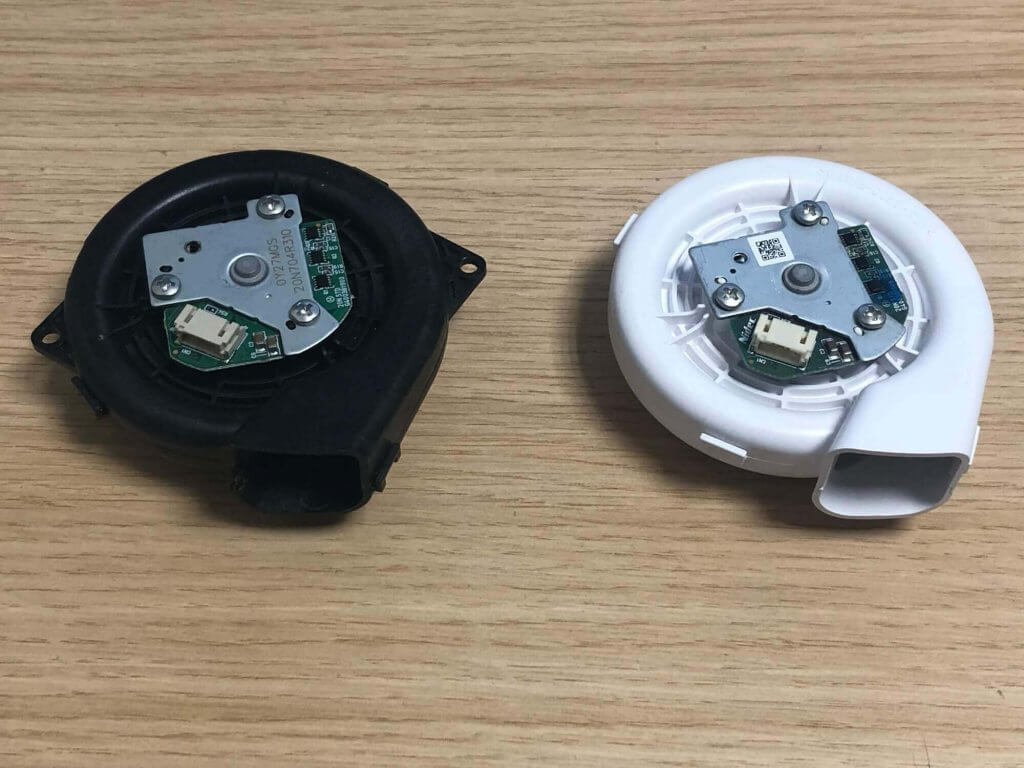
To confirm, I quote the opinions of experts:
Service Xiaomi: The motors mainly differ only in the way they are installed. There is a purely visual difference on the board under the compressor, for example, a different layout of the driver board. But in any case, they are interchangeable.
Medtech: Xiaomi robot vacuum cleaner motors differ in power and type of control signals (there are up to 2.5 kPa and up to 4 kPa). But all these values are achievable only at the stand. As a result, they are distinguished by the current consumption when checking: some at 12V consume less than 2A, some – more than 2A, the difference is about 1A. Of course, there is more noise, but in the end, without a brush, the robot cannot collect heavy litter. The brush should throw it up, and the air should be drawn into a small hole in the dust collector channel. It turns out that the more power the fan runs, the easier it is for the robot to suck up thrown litter and the brush is cleaned better. But it all works when there is a lot of garbage. When the robot vacuum cleaner works every day, less power is enough.
Build quality comparison
Well, let’s move on to comparing the build quality of robot vacuum cleaners. In my opinion, the Roborock robot vacuum cleaner is the best assembled. I’ll explain why.
Firstly, the number of screws and the body parts is bigger. It took the longest to disassemble and this indirectly gives an understanding that the robot vacuum cleaner is assembled better, and not “on three bolts”. Secondly, the information on the motherboard that it is manufactured by TANOS immediately catches the eye.
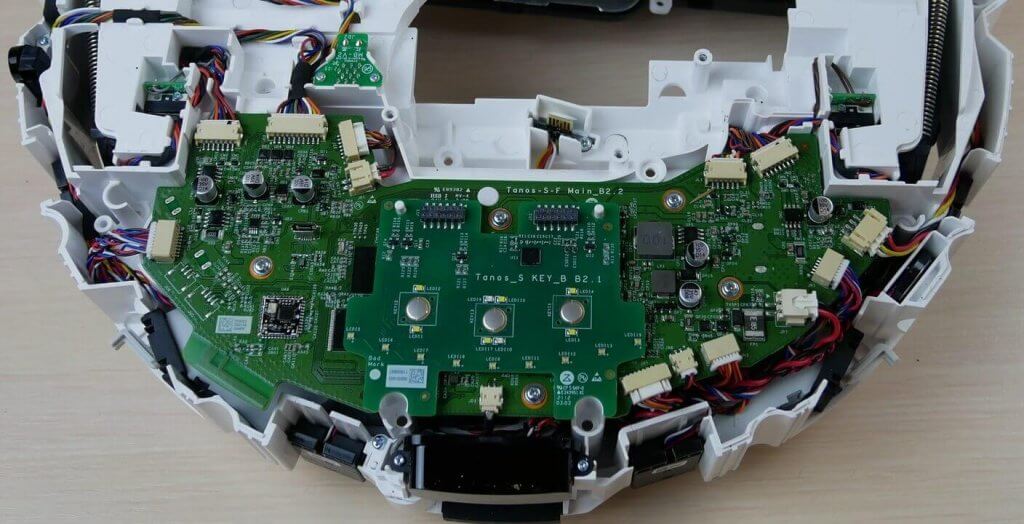
As far as I know, this is a highly specialized company, one of the areas of which is the manufacture of boards, and in this area they are well known as specialists. A separate company is engaged in the manufacture of the “Roborock” board, while the rest of the boards, apparently, are just copies. Thirdly, each node of the robot vacuum cleaner has a Roborock logo and a special QR code, which simplifies the process of finding the right spare part, and shows how well the manufacturer prepared in terms of assembly. Well, the last thing that makes the assembly of “Roborock” robots to stand out from others is the presence of number of different seals that prevent dust and moisture from entering the sensors, as well as circuit elements.
Second place in this comparison goes to the Dreame robot vacuum cleaner. It is slightly lower in build quality, but also well built. Of the obvious visible remarks, the isolation of the tracks on the board is less accurate and not the entire board is covered, but each element separately. However, there are QR codes on each node and there are no critical remarks to the assembly. Also, as mentioned earlier, the protection of the circuit is organized a bit better than in other robots, which are lower in build quality.
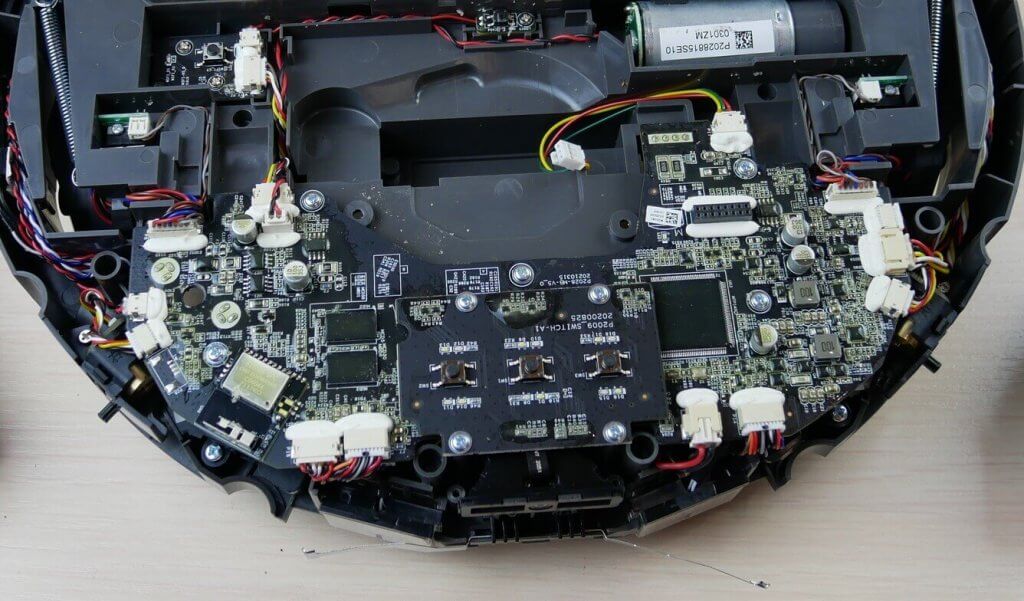
In third place in terms of build quality, I would place a robot vacuum cleaner from the Mijia factory. It’s also well-built considering the price is practically half the price. There are QR codes on all nodes, and, in general, the quality of soldering, boards, and plastic is far from call it budget one. And by the way, we see that the board has 2 “rockchip’s” processors. As I understand it, one is responsible for all the standard functionality of the robot vacuum cleaner, and the second for the object recognition system.
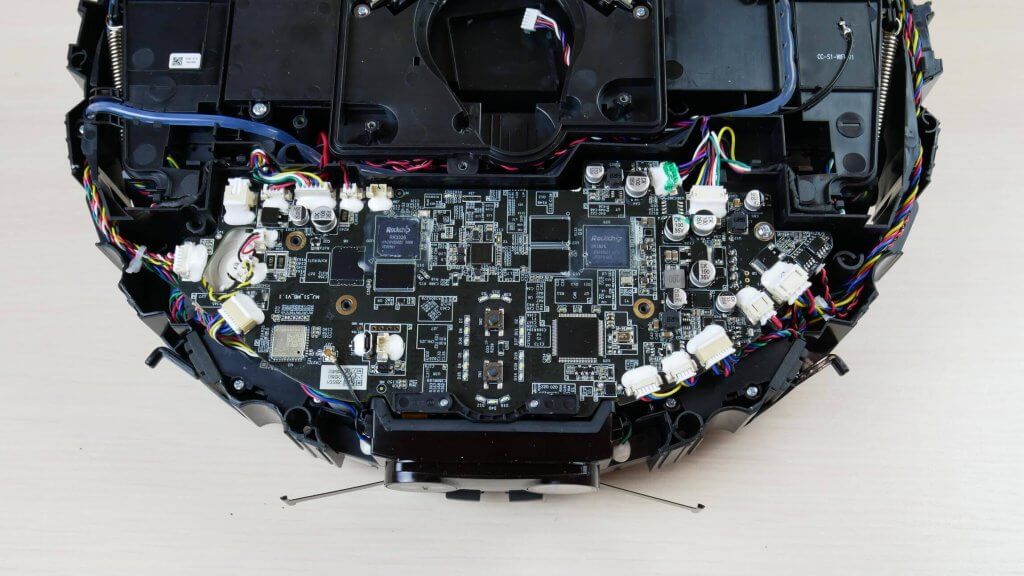
Well, as for Viomi Alpha UV (S9) and Roidmi EVE Plus, there is a very interesting point. At the beginning of the comparison, I already mentioned that their lidars and batteries are visually the same. So after these robot vacuum cleaners were disassembled, it turned out that inside they practically do not differ. The only difference is that in Roidmi, some circuit components are displayed on a separate board, which is installed above the main one. Well, the minimal advantage of the Viomi assembly is that all connectors are additionally covered with a compound, which increases the reliability of their connection.
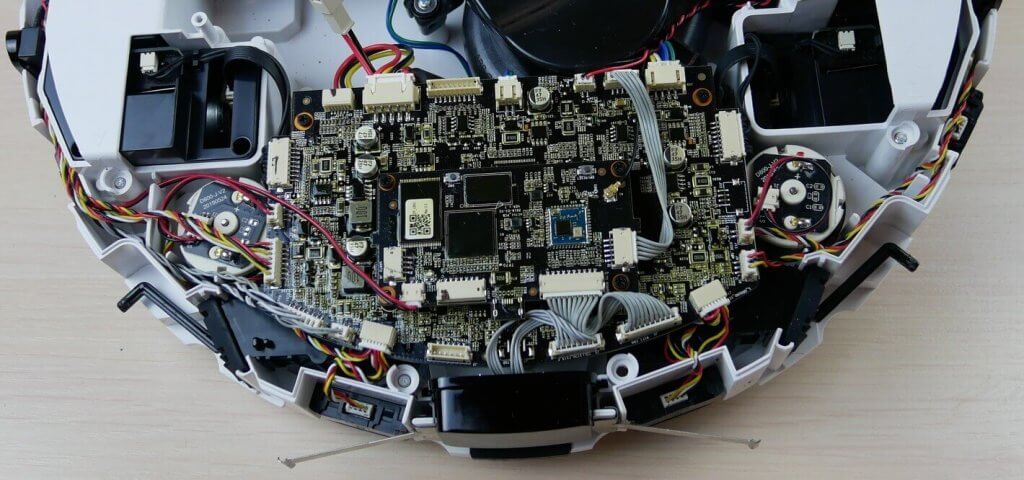
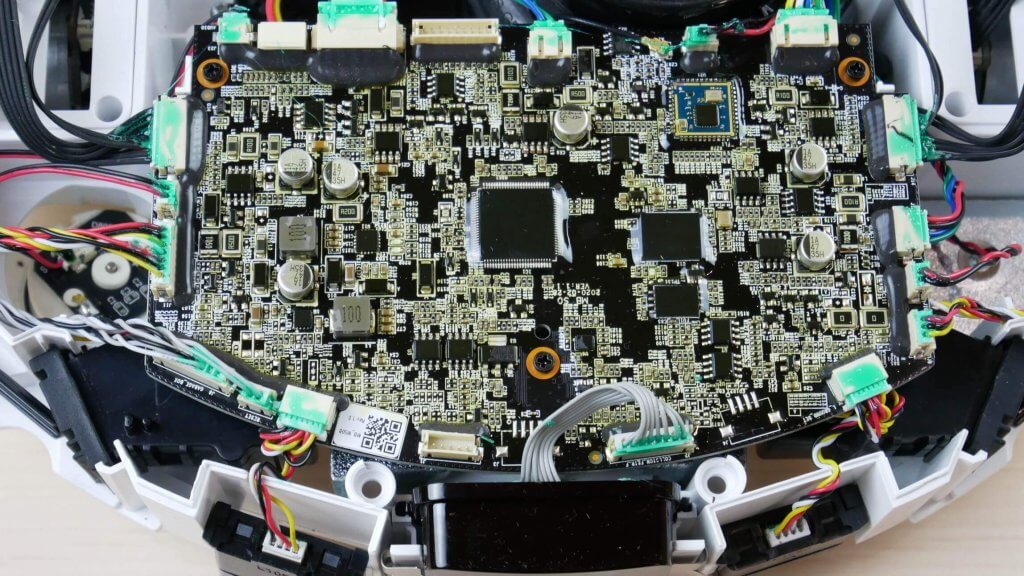
In the end, for Roidmi, at its cost, some shortcomings and lower build quality can be excused. But here the question comes for Viomi. Why, with almost the same build quality and functionality, the price is $200 more? So what are we paying for?
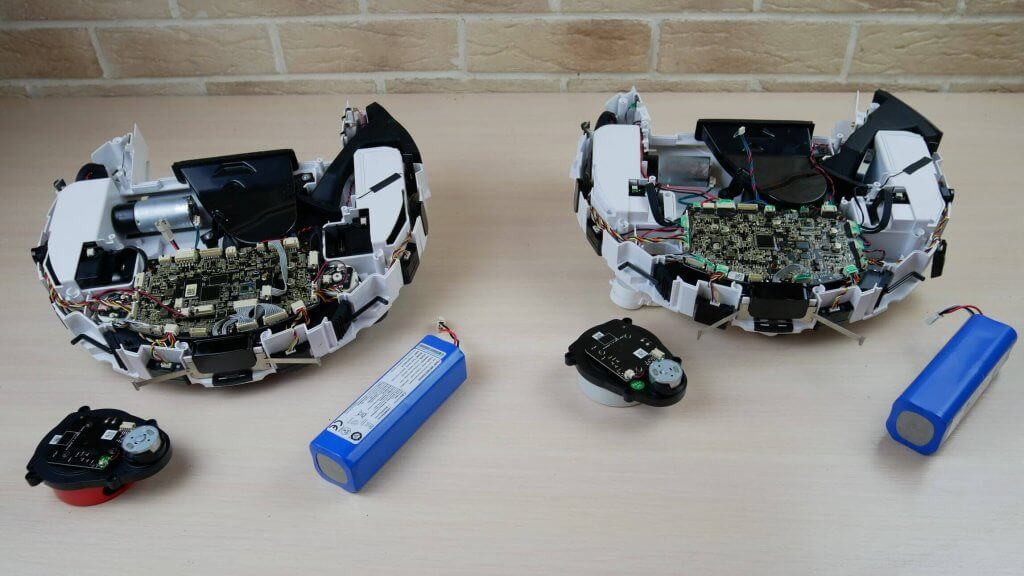
Here I can only say in defense of Viomi that the body of the robot, the quality of plastic, is much better. In Roidmi, even the shade of plastic shows the low quality of the assembly, which we can`t say about Viomi. So, inside they have minimal differences, but still Viomi has a better built. While on the outside the build quality is very different. For this, most likely, there is an increased cost. But we have to admit, that the difference in price can`t be compared to differences in build quality.
Amazon: Viomi S9
Yes, and it is also worth noting that the isolation of the Roborock and Mijia boards is much better comparing to other robots. The board is completely covered with a layer of silicone, which prevents corrosion. And for robot vacuum cleaners with a wet cleaning function, this is quite an important point. In Dreame, the isolation is less accurate, but still the layer is thick and the isolation performs its main task. Visually, in Roidmi and Viomi, the board is less protected by an insulating layer, which in the future can lead to earlier corrosion.
Medteh’s opinion on this matter:
Both models have very simple water protection. The corners of the elements remain slightly open, or the layer there is so thin that it is almost non-existent. This is where corrosion starts.
Well, here is how Xiaomi Service commented on this whole situation:
Generally, we would rank the brands as follows (in terms of build quality): 1st place – Roborock, 2nd – Viomi and Dreame, 3rd – Mijia and Roidmi. However, the Viomi S9 model itself is not the most successful in the line, so in this comparison, in our opinion, this is the arrangement: 1st place – Roborock, 2nd – Dreame, 3rd – Mijia, Roidmi and Viomi.
I am strongly agree with above said.
And here’s another important quote:
Service Xiaomi: Roborock only started assembling its robot vacuum cleaners this way with the S7 model. For example, the S6 MaxV is not very different in assembly from the very first Vacuum Cleaner. The number of screws in the S7 when we opened it for the first time was surprising, there are too many of them. Robot also became heavier and, of course, because of this, he looks and feels more monolithic and more pleasant.
Summing up, personally, I was a bit disappointed from Viomi, because before that I considered it one of the best robot vacuum cleaners in 2021. Well, talking about Roborock, the expectations were justified the increased cost of the robots of this brand looks reasonable. As for Dreame, Mijia and Roidmi, these robot vacuum cleaners are optimal in terms of price and build quality, I have no complaints about them.
Amazon: Roidmi Eve Plus
Here, I would like to end this comparison. Special thanks to Medtech and Service Xiaomi for their professional assistance in preparing materials! If you have any questions, ask them in the comments below. Happy tech shopping. Bye!

